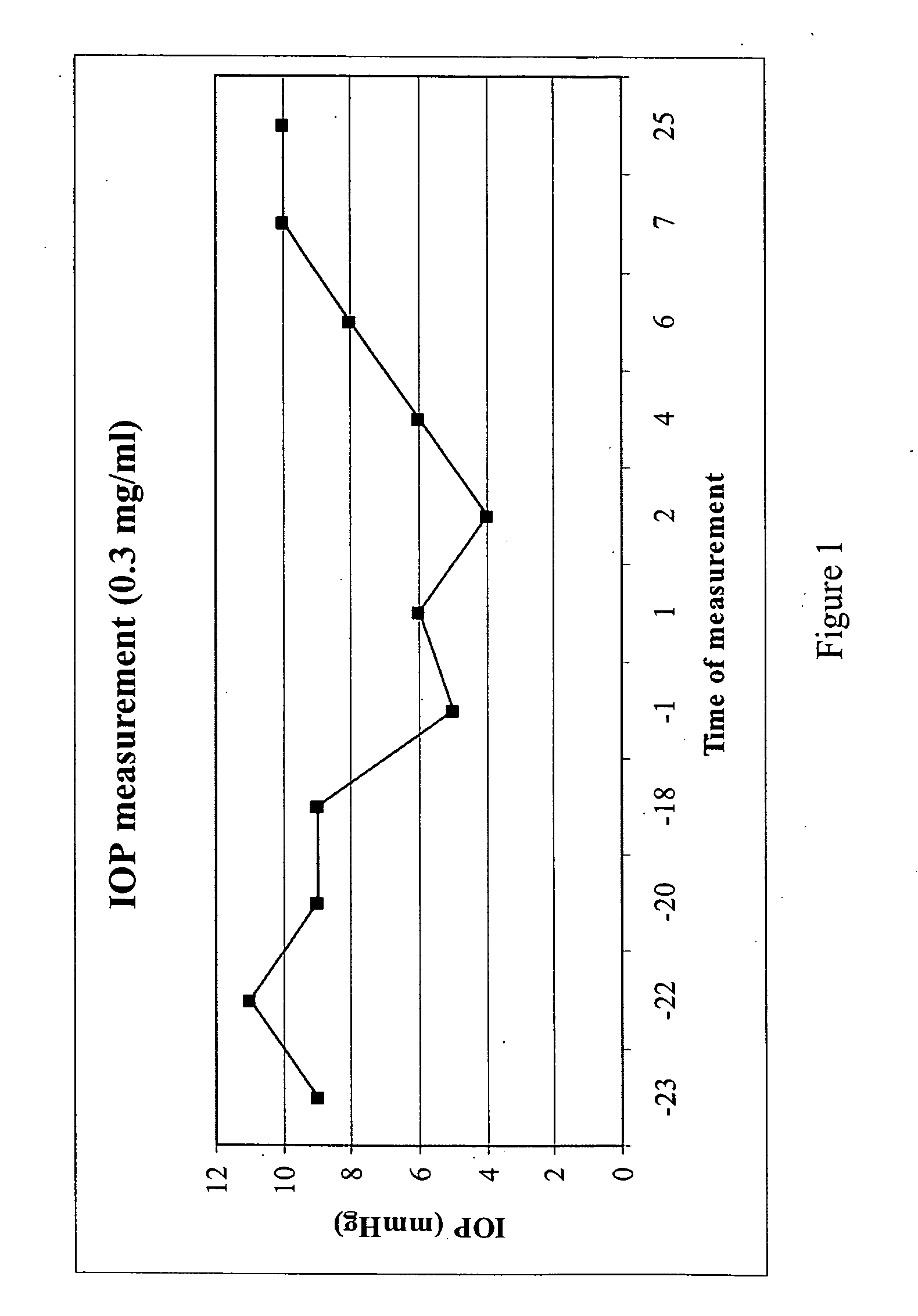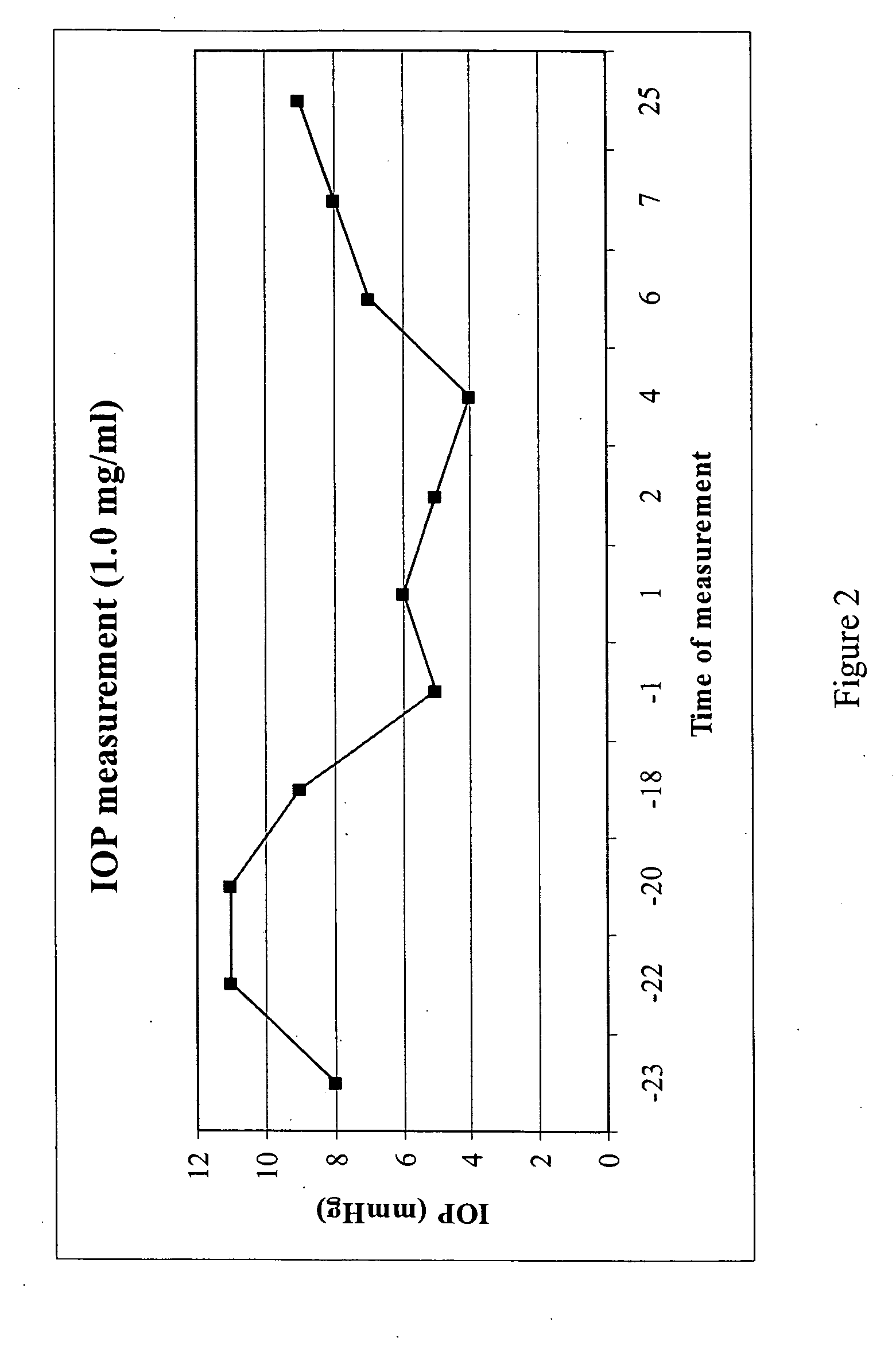Purine derivatives and methods of use thereof
- Summary
- Abstract
- Description
- Claims
- Application Information
AI Technical Summary
Benefits of technology
Problems solved by technology
Method used
Image
Examples
example 1
5.1 Example 1
Preparation of Compound I′-1
[0227]
[0228] 6-Chloroadenosine (Aldrich, 1.145 g, 4 mmol) was diluted with ethanol (50 mL) and to the resultant solution was added 1-hydroxymethylcyclopentylamine (1.0 g, 8 mmol). The resultant reaction mixture was heated to reflux and allowed to stir at reflux for about 15 hours. The resultant reaction mixture was cooled to room temperature, then concentrated in vacuo to provide a crude residue. The crude residue was purified using flash column chromatography (silica gel column using 8% methanol-dichloromethane as eluent) to provide Compound I′-1 (0.383 gm). 1H NMR (DMSO-d6): δ 1.51-1.62 (m, 2H), 1.7-1.82 (m, 4H), 2.10-2.18 (m, 2H), 3.16 (d, J=5.1 Hz, 1H), 3.50-3.58 (m, 1H), 3.62-3.68 (m, 2H), 3.95 (bs, 1H), 4.09-4.15 (m, 1H), 4.58-4.66 (m, 1H), 5.06-5.10 (m, 1H), 5.18 (d, J =4.2 Hz, 1H), 5.35-5.40 (m, 1H), 5.44 (d, J=6 Hz, 1H), 5.87 (d, J=6 Hz, 1H), 6.85.(s, 1H), 8.20 (s, 1H), 8.36 (s, 1H); MS (ES+): m / z 366 (M+1).
example 2
5.2 Example 2
Preparation of Compound I′-19
[0229]
[0230] 2,6-Dichloroadenosine (Aldrich, 0.4 gm, 0.0012 mol) was diluted with ethanol (25 ml) and to the resultant solution was added I-hydroxymethylcyclopentylamine (1 gm, 0.008 mol). The resultant reaction mixture was heated to reflux and allowed to stir at reflux for about 6 hours. The resultant reaction mixture was then cooled to room temperature and concentrated in vacuo. The resultant residue was purified using flash column chromatography (silica gel column using 8% methanol-dichloromethane eluent) to provide Compound I′-19 (365 mg, 83%). 1H NMR (DMSO-d6): δ 1.51-1.62 (m, 2H), 1.71-1.82 (m, 4H), 2.10-2.18 (m, 2H), 3.50 (m, 1H), 3.62-3.65 (m, 2H), 3.94 (bs, 1H), 4.12 (bs, 1H), 4.51 (d, J=5.4 Hz, 1H), 4.97 (bs, 1H), 5.07-5.09 (m, 1H), 5.22-5.24 (m, 1H), 5.48-5.50 (m, 1H), 5.77 (d, J=2.4 Hz, 1H), 5.80 (m, 1H), 7.42 (s, 1H), 8.40 (s, 1H); MS (ES+): m / z 400 (M+1).
example 3
5.3 Example 3
Preparation of Compounds I′-7, I′-91a, I′-92a, I′-92b, I′-93a, I′-94a, I′-95a, and I′-95b
[0231] Compounds I′-7, I′-91a, I′-92a, I′-92b, I′-93a, I′-94a, I′-95a, and I′-95b were prepared according to the general methodology described in Examples 1 and 2 and elsewhere herein. These compounds were characterized by mass spectroscopy as set forth in Table 1 below.
TABLE 1Mass spectroscopic characterizationfor illustrative Purine DerivativesMS (ES+):Compoundm / z [M + 1]I′-7366.4I′-91a366.4I′-92a380.3I′-92b380.3I′-93a380.3I′-94a400.4I′-95a414.4I′-95b414.4
PUM
| Property | Measurement | Unit |
|---|---|---|
| Temperature | aaaaa | aaaaa |
| Structure | aaaaa | aaaaa |
Abstract
Description
Claims
Application Information
 Login to View More
Login to View More - R&D
- Intellectual Property
- Life Sciences
- Materials
- Tech Scout
- Unparalleled Data Quality
- Higher Quality Content
- 60% Fewer Hallucinations
Browse by: Latest US Patents, China's latest patents, Technical Efficacy Thesaurus, Application Domain, Technology Topic, Popular Technical Reports.
© 2025 PatSnap. All rights reserved.Legal|Privacy policy|Modern Slavery Act Transparency Statement|Sitemap|About US| Contact US: help@patsnap.com



